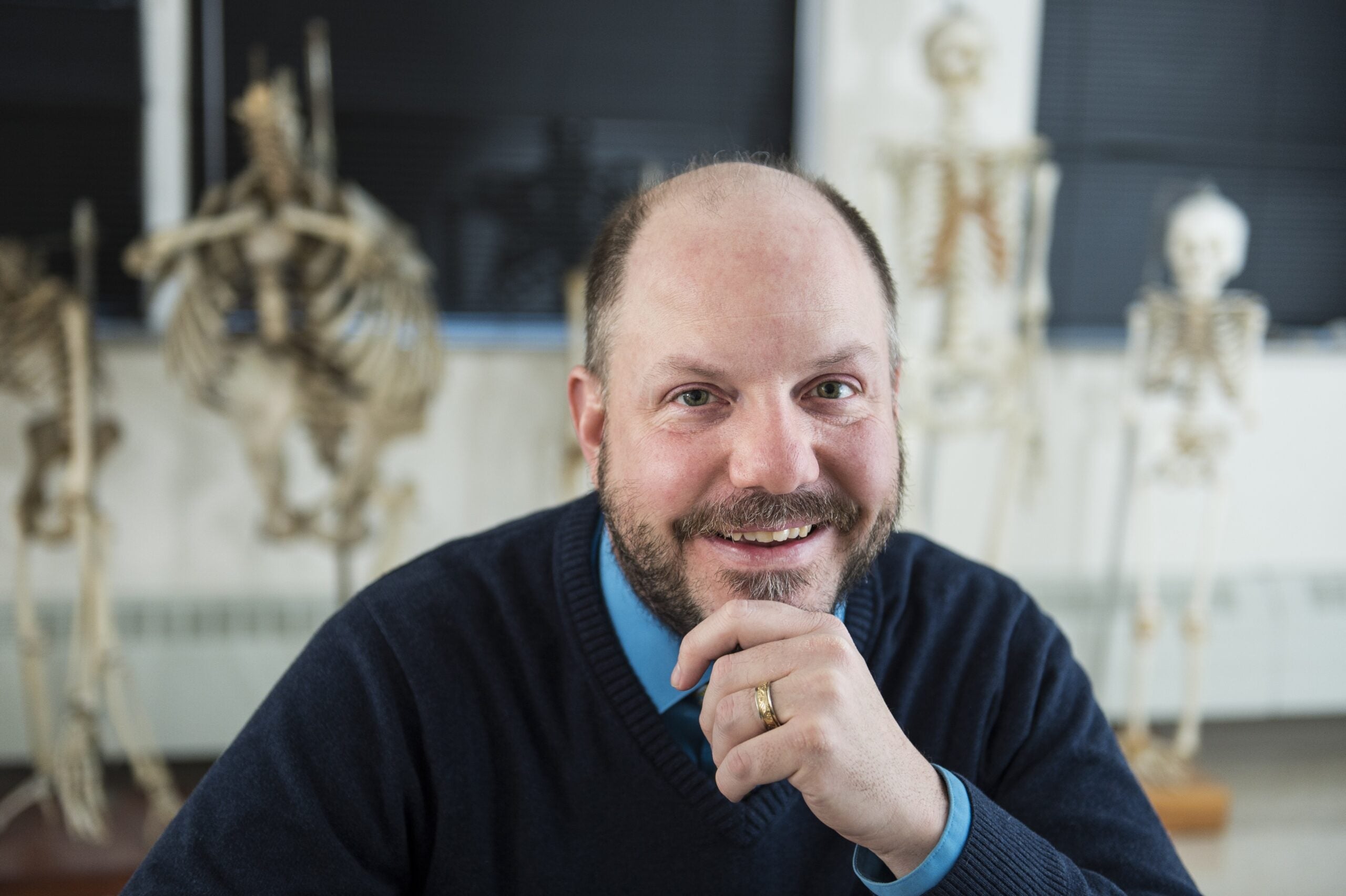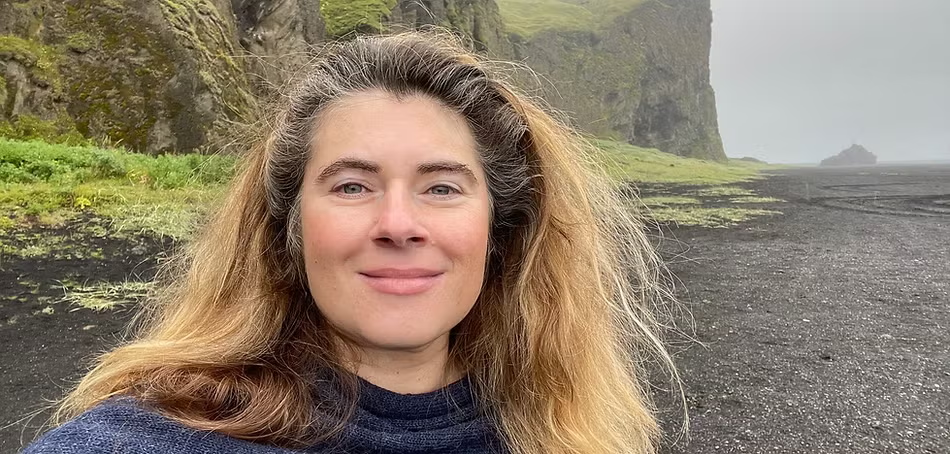University of Wisconsin-Madison Professor John Hawks was recently one of the leaders of an expedition to South Africa that uncovered a new species of hominin called Homo naledi.
While the full implications of this discovery are still ongoing, researchers know that this discovery represents a previously unknown branch of the human evolutionary tree.
Hawks, a professor of anthropology at UW-Madison, recently sat down with “To The Best Of Our Knowledge” executive producer Steve Paulson to talk about the discovery and what it means about being human:
News with a little more humanity
WPR’s “Wisconsin Today” newsletter keeps you connected to the state you love without feeling overwhelmed. No paywall. No agenda. No corporate filter.
Paulson: John, how important a discovery is this trove of ancient fossils in South Africa.
Hawks: When you think of a famous fossil discovery like Lucy, we’re talking about an impressively complete skeleton, and in our terms that means about 40 percent of the body is there in one way or another. For the Dinaledi Chamber, we have 15 individuals and we have very complete representation of all parts of the skeleton in multiple instances. So, we’re looking at something that is truly unparalleled in the African fossil record.
So does this discovery change our understanding of human evolution?
I can see, at this point, we’re two years in after the discovery of the bones initially and we’ve done a lot of analysis. I have already changed a lot of my ideas about how our evolution went, and we’re still learning what these bones have to tell us.
So what’s changed for you in your understanding — your narrative that you’ve pieced together about our evolutionary history?
Maybe 15 years ago — certainly when I was a student — we thought that the transition from early hominids that we call Australopiths to our genus, homo, was an event that was accompanied by a change in the way that we walk, a change in the way that we deal with culture. We started making artifacts, we developed technology. That change was tied to a change in diet. We got smaller teeth and we ate higher quality things. We shared food, we began to relate to groups of people in tighter way with more cooperation. And that meant that the brain got bigger. And all of these things were closely linked to each other. And the fossil record — the archaeological record — seemed to support that. Looking at Homo naledi, its skull looks a lot like the skulls of other early homo types of creatures — Homo habilis and Homo erectus — except it’s too small. The brain hasn’t increased in size the way that humans have. It walked like us. It’s feet are the most human aspects of its anatomy. It manipulated objects. We see that their hands were apparently well made to make things. And its teeth looked like they were made for a high quality diet – they’re more human-like in some respects than Homo erectus, Homo habilis for certain.
But other parts of its anatomy are strikingly primitive. It’s hips are Australopith-like, they look nothing like the hips we’ve attributed to homo before. Its brain is so small it tells us that these thing that we thought went together as a package actually happened separately, and maybe in separate branches of our evolutionary tree.
Wow, it sounds like you’re saying we might have to rewrite this whole story.
It’s very clear that the discoveries we’ve made over the last 10 years have started to take apart this story that we thought was very tight and concise, and it’s made it much more complicated.
Do we know if this new species you’ve discovered, Homo naledi, if it’s a direct ancestor of us?
We don’t know. Homo naledi is the right form to fit into our family tree, somewhere around the time of the origin of Homo erectus or slightly earlier.
How long ago was Homo erectus?
Homo erectus lived from the beginning point around 1.6 to 1.7 million years ago up until around 400,000 years ago or so. And so, this would be around the beginning of that — maybe earlier — in terms of how its connection to us occurs.
But we don’t know the age of the fossils. We don’t know if they are that old. They could have lived 100,000 years ago, 50,000 years ago. They could have lived alongside modern humans and we don’t know it yet, or they could be vastly older. Maybe they’re the first evidence of a human-like creature. We literally do not know the date.
You’re saying there’s a possibility this species could be 50,000 year old. It could also be a million years old?
It could easily be a million …
That’s a huge difference.
And believe me, for us that’s something that weighs on us obviously. We want to know how old it is. The trick in this case is that in South Africa, we usually depend on the caves to tell us how old things are. The bones of hominids are usually found along with bones of other animals, and the animals are extinct so that tells us around the time that the fossil hominids lived. Also they usually occur in hard cement-like rock called breccia, and that rock is cemented together with cave formations called flowstones, and we can usually develop an age estimate for the flowstones.
The Dinaledi Chamber, where we found these bones, does not preserve any other extinct animals in association with these hominids. So we can’t look at the other creatures, there aren’t any. And the bones are in a soft sediment like clay. We use paintbrushes to excavate through it. So we don’t yet have the flowstones that will tell us what age the fossils are.
What was this like for you? You’re one of the core scientists on this project — was there a moment when you realized. ‘Oh my God, this is extraordinary?’
When we were working in the field — and I give Lee Berger all the credit for this, he’s the project director — we were in the field and bones were coming out of the cave and you start to realize wait a minute, there’s not one skeleton as we might have imagined. If we had found one skeleton that would be one of the most amazing discoveries ever. We have Lucy, a famous discovery. Why? Because there’s a skeleton there. We started to realize there were multiple ones, and we started to realize there weren’t any non-human animals. It started to look a little funny and suddenly it’s like, “Wow! I have just jumped into the middle of something that is a discovery that will consume all of us for decades, trying to figure it out.”
As far as you can tell, what would these individuals have looked like?
If you look at them from a distance they would stand around the size of a very small human, so 4 feet 6 inches to 5 feet 0 inches. They would be thin for their height. Looking more closely, they stand very much like a human. Their feet are the most human-like aspect of them. They’re clearly well made for walking, and walking in a human-like way. Their heads are very small, you’re looking at an ape-sized head, but an ape-sized head that’s configured a bit more like a humans. And probably they would have had powerful arms. We see that their thumbs are some of the unique aspects of the skeletons because they have these very powerful bones that root their thumbs to their hands. You’re looking at somebody that’s made for a tough lifestyle but is slight and slender, like a lightweight wrestler in their build.
What else distinguishes this new species?
We have this interesting view into their social life because we have bodies of all ages. We have a newborn, many children of different ages, an old adult. And of course, one of the most interesting aspects of it is that they are in this remote cave chamber by themselves, and we investigated that in every way that we could.
The question is how did they get there?
Yeah, how did the bodies get in. Today the cave is twisty and turny underground, has narrow passages that are hard to get through, and the chamber itself — where the bones are found — is accessible today only through this very narrow slot that you have to climb down. It’s a 30-foot climb. It’s a tough place to get to. We don’t know for sure that the cave in the past had the same contours as it does today. Caves change, they evolve. But we can show that this chamber was never open to the outside. That helps to explain the lack of other non-human creatures because they didn’t have access to this.
One theory that you’re throwing out the window is they didn’t fall accidentally to their death or you’d find other animal remains …
Yeah, this is not a pit that they’re falling into. You had to go through some cave distance to get to this place. And maybe there were carnivores that were using the cave, and maybe the they were dragging bodies in. We don’t have any mark on any bone fragment that we have that has a tooth mark from a carnivore. The fact the bones are pristine and don’t have fresh breaks on them …
So, no evidence that they died violently either?
Yeah, there’s nothing yet that suggests that they fell, were hurt, dragged in …
They were placed there. You’re concluding that dead bodies were probably moved to this chamber in the cave.
Yeah, these bodies entered that chamber whole, and they entered it not all at once in some kind of catastrophic flood or other event. They entered it over some time. At this point we believe the most logical explanation is that Homo naledi did this — that they were bringing bodies to this place.
You’re talking about some sort of burial site.
That’s a tough word for us. It is, because it’s natural. It’s natural to say they respected this place — they were bringing the bodies there, they cared about it, it’s some sort of burial — but from the science side, we don’t know what they were thinking. The bodies were not intentionally placed in graves. So, we try as much as we can to divorce it from human cultural cases that we immediately imagine. We know that these bodies were taken there by someone who knew this chamber and who did it repeatedly. That implies a kind of cultural knowledge that was shared with the group, and it implies some sort of recognition of mortality — maybe that’s all it implies.
Was this part of religious ceremony? Was there some belief in an afterlife?
As an anthropologist, those are the questions that most engage me. And it is important for us not to over-interpret. We don’t know what Homo naledi knew.
OK, so you’re being a very good scientist here. You’re being careful, rightly so, but you have to be speculating about this. What’s your best guess as to why these bodies were put there.
My inclination after thinking about it really hard is that on the one hand, it’s simpler than you want it to be. We can’t imagine that there was some sort of ceremony … we’re not talking about religion in a human sense. We’re not talking about something that we recognize as having the trappings of beliefs as humans have it. We’re not looking at that. On the other hand, you have ritualized — in a very deliberate sense — some kind of behavior that builds on that shared basis.
So you’re talking about rituals, but you’re reluctant to use the word religious along with that.
That’s exactly right. We know it was repeated, that it had importance of some kind, but we don’t know that it was symbolic or had a component that was beyond the ordinary that required a belief or communication system – the things that religion in humans is built on. We just don’t know. And for me it’s certainly something that makes me meditate about what were our ancestors doing, what were they thinking, and where was our place in this with creatures that had had in some respects, very human-like behaviors but were not themselves humans.
With additional reporting by Anne Strainchamps, Steve Paulson and Rehman Tungekar.







